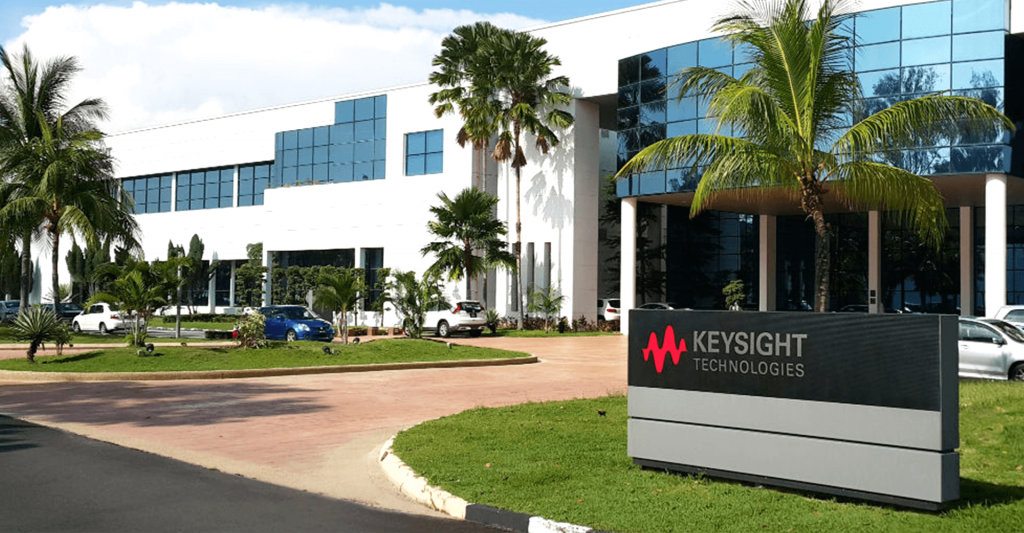Telcos needing to upgrade their networks to serve new markets are being aided by more easily deployable technology and testing solutions to do it. Business technology journalist, Antony Savvas takes a look at the systems available.
Vodafone
Vodafone has just completed an advanced software upgrade across its entire global transport network. This network serves hundreds of millions of users and third-party internet and content providers in 28 countries across four continents.
The software enhancement, says Vodafone, is the foundation on which wholesale and enterprise customers can progressively add capacity “faster and more cost-effectively” to meet future demand, as well as introduce new services and “boost security at scale”.
Vodafone applied software defined networking (SDN) to the multi-vendor parts of the global network that orchestrates all mobile and fixed data and voice traffic. Specifically, Vodafone engineers deployed the software to both the optical network, which converts data into light for transmission at very high speeds, and the internet protocol (IP) network that securely allows computers and devices to connect to the internet.

The new technology will lead to a network that is fully automated and programmable and which behaves more like a “supercomputer”, the telco says. Changes to more than 620 multi-vendor network platforms can be achieved using software-driven commands, virtually stored in Vodafone’s secure private cloud.
“This software upgrade gives us a single view on the section of the transport network connecting people and machines globally,” says Johan Wibergh, chief technology officer of Vodafone. “We can continually and automatically adapt to dynamic peaks in traffic worldwide, whether they are due to people returning to the office or live streaming major sports events.”
The deployed solution is based on a multi-vendor and multi-layer hierarchical architecture delivered through the implementation of Juniper Networks’ Paragon Pathfinder IP and MPLS SDN controller; Ciena’s manage, control and plan (MCP) optical SDN controller; and Cisco’s Crosswork Hierarchical Controller. Communication between these different vendor components is facilitated through open and standard industry protocols and application program interfaces (APIs), creating a single, end-to-end SDN management layer.
With data traffic over Vodafone’s fixed and mobile networks continuing to grow by more than 15% per year, it’s a solution that should certainly enable it to more easily meet demand.
Edge
To address expanding edge demand, Openreach, the broadband delivery unit of BT, has deployed a new solution from ADVA to support Ethernet access direct (EAD) services to customers throughout the UK, addressing its infrastructure requirements to meet the bandwidth, timing and programmability needs of new business, 5G and enterprise services.
ADVA says its high-bandwidth demarcation and edge aggregation devices will enable Openreach to reduce space and power consumption, while also helping to lower its carbon footprint.
“Through working with ADVA we can enable our customers with flexible high-bandwidth point-to-point connectivity,” says Mark Logan, director of products at Openreach.

The infrastructure upgrade features the ADVA FSP 150-XG100Pro Series, a 10Gbps programmable demarcation and aggregation platform designed to provide the capacity and compute power needed for demanding applications.
It enables Openreach to offer carrier Ethernet and IP services with a range of bandwidth options from 100mbps to 10Gbps. The system supports highly-precise synchronisation, making it a “perfect fit” for applications with stringent timing requirements, such as 5G, says ADVA.
Testing
Such deployments can now be supported by new testing solutions from key players in the CSP (communications service provider) industry.
Spirent Communications has just released Spirent Vantage, designed to simplify and automate 5G service assurance. It uses a “turnkey” approach that allows operations teams of “any size and skill” to understand their network and service performance.
Providing end-to-end network visibility, actionable insights and automated troubleshooting, Vantage is designed to be easy to deploy and scale, while including a pre-built library of test suites that enable on-demand and continuous testing “straight out-of-the-box from day one”, promises Spirent.

“5G networks are much more complex than previous mobile technologies, with the introduction of disaggregation, edge computing, cloud-native architecture and multi-vendor environments,” says Doug Roberts, general manager of Spirent’s lifecycle service assurance business. “Vantage tackles this complexity so operations teams can easily understand their network and service performance at a glance, proactively identify issues and rapidly isolate the cause of problems.”
Using machine learning and AI (artificial intelligence), Vantage can automate troubleshooting in “three easy steps”. First, it provides at-a-glance network-wide service performance views, then it can visualise potential impacts via filtering dashboards with customisable overlays. Finally, Vantage provides root cause analysis (RCA) that can pinpoint the source of performance issues and impacts on workflows.
“Mobile operators are already stretched by identifying, isolating and remediating issues in their 4G networks,” says James Crawshaw, practice leader for service provider transformation at analyst house Omdia. “As they migrate to 5G they need to streamline and simplify their network and service assurance processes. Spirent Vantage seeks to address this problem by democratising network visibility and troubleshooting, with pre-built tools that leverage machine learning and which work out-of-the-box.”
Keysight on-demand

In another testing development, Keysight Technologies has announced that its Open Radio Access Network Architect (KORA) test solutions are moving to cloud-based deployment, for “improved flexibility and rapid deployment”.
In addition, its LoadCore software for testing 5G cores is now available as a metered, pay-as-you-go solution in the AWS Marketplace, to allow customers to “scale costs with usage”.
The KORA suite verifies the functionality and performance of end-to-end openRAN infrastructure, and LoadCore, a component of KORA, enables customers to perform network capacity tests, measure device data throughput, and model a wide variety of end-user behaviour and mobility scenarios.

LoadCore can verify that delivered connectivity services remain stable under various demanding conditions, such as sudden spikes in network usage caused by disasters or other major events.
“As a cloud-based pay-as-you-go offering, users can purchase and provision KORA test solutions immediately to fit their testing needs,” says Kalyan Sundhar, vice president and general manager of 5G edge to core solutions at Keysight.
Rolling out new services across large market footprints has always been tricky for telcos, but now there is more support than ever to help them do it.
The author is Antony Savvas, a global freelance business technology journalist.
Comment on this article below or via Twitter: @VanillaPlus OR @jcvplus






